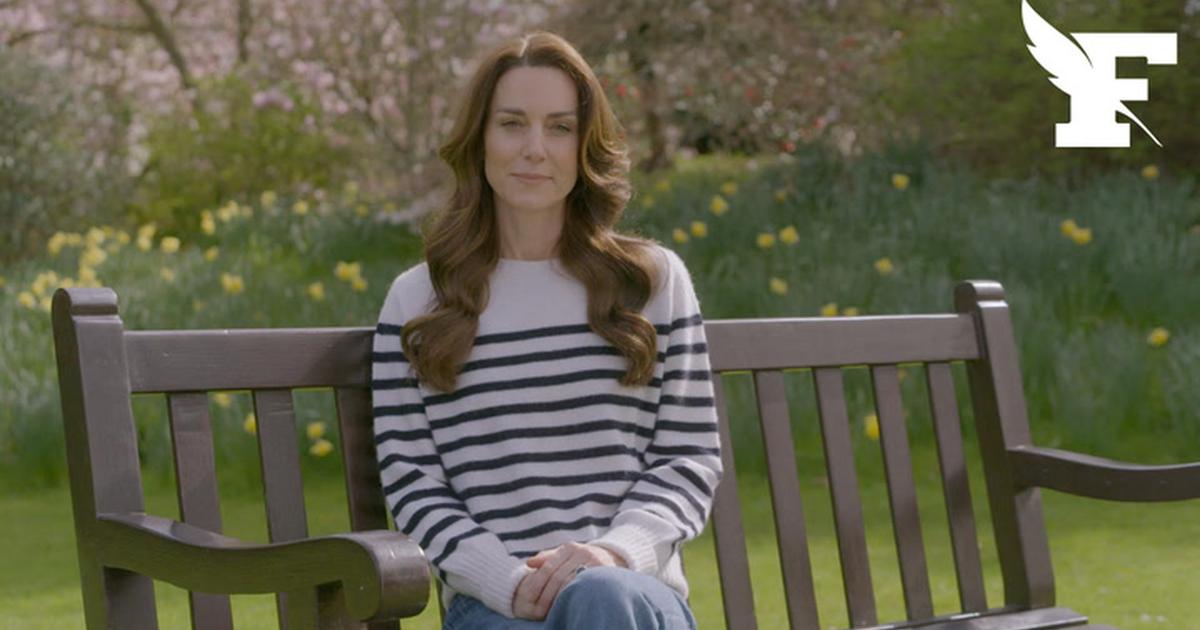"Daddy, can you tell me a
story
? ”.
In the movies, the parent looks into infinity, smiles, adjusts the hood, and begins his story.
There is usually a princess (or a prince) with tribulations similar to those of the child.
He listens to the story spellbound.
If anything, she asks a question or two that help her land softly on the intended ending, just before her eyelids close and the sequence ends.
But anyone who has been inventing a children's story on the fly knows that the experience is usually not so smooth.
You get into gardens from which it is not easy to get out, the little bear loses its bellows and there is no way that we will care again and, in response to the listener's requests, we have moved the action from a forest full of possibilities to the house of some beetles what ... you know.
The idea was for the girl to fall asleep, but she has woken up and wants to jump on the bed.
Or worse: they get bored and have to start over.
Download the latest issue of BUENAVIDA for free
Do I pick up a book or make it up?
In many families, reading stories is part of daily routines, although it is not so common to do it without paper.
Opening an album is like raising the curtain on a theater: the spectators occupy their seats, there is a text with a structure and a sound that captivates, the illustrations immerse us in the story and as — surely — we have read it several times,
the child awaits with delight your favorite moment
.
What's more, they have a private joke about the spider that hangs from its web in the window and, when they reach that page, their little finger lights it up like a spotlight.
They are not exclusive ways of narrating, each one has its space: stories without a book can appear on a car trip, on the way to school or, simply, we tell them to pass the time.
Every time we do this, we are interacting with our child in a unique way.
"Whether with or without the support of the book,
the fundamental thing when we tell a story is that we build a shared imaginary
, a fictional world with its own codes," explains Ellen Duthie, author and specialist in children's literature and in philosophical practice with children .
Share your passion for reading aloud on your blog
We read it like this
.
“One of the things I like the most [about telling these stories] is acquiring that shared code.
Many readings lead to experiences that go outside the book and go into something else: when your child plays with you to be Pippi Longstocking you are immersed in a kind of common cultural heritage according to the rules of that fiction.
That experience
has a lot to do with the game and with a kind of private language
.
It is something beautiful that is also created in free narration ”.
There is the key, in the common universe that stands between the narrator and his listener
.
The specialist in this practice Alicia Bululù (Alicia Remesal), also an actress and teacher, sees it this way: whether or not a book is used, “in both cases it is a space of affection.
When orality is more primary, there is a very direct and very emotional contact.
And, what sets it apart above all is the look.
When the support is not there, you have no choice but to be aware of that affective channel ”.
Who has not ever seen himself reciting
El Pollo Pepe
on autopilot ...
You have already decided: you will invent a beautiful Christmas story for the churumbel!
Finding the thread to pull is not always easy.
We are tired, we are not used to it, we lack imagination, our previous attempts have ended up deflating like an abandoned beach ball ... Peace of mind:
nobody has said that you have to start from scratch
.
Use the tools of your ancestors, which have been perfecting since the beginning of time.
If they have come this far, it will be for something.
“Due to their structure, which allows setting a rhythm and also ordering the chaos of life and naming it, the formula tales [
popular narratives of the oral tradition dedicated to children
, full of diminutives, onomatopoeia and similar turns] are a good resource to begin with ”, assures Alicia Remesal.
Cantinelas, strings, riddles, couplets ... And add a body game, such as "the spider spider that climbs the stairs and tickles" (no need to explain, right?).
In short, "relate word and affection", refines the pedagogue.
If you get a taste for it, there are great anthologies of folk tales.
Take a look, for example, at the website of the writer and narrator Pep Bruno;
or
The Adventure of Hearing: Tales and Memories of Oral Tradition,
by Ana Pelegrín.
Unicorns or witches don't always have to appear
In his workshops, Remesal proposes that parents tell their offspring why they named him after him.
“It is a story that almost the whole family knows, except the person involved, and they love it.
It helps them to locate themselves and reinforces the feeling of belonging ”.
And it
vindicates the family stories
.
There is always a funny anecdote starring the grandmother or an uncle, or our own experiences: "Do you remember when we went to the field and saw that cat that ...?".
These kinds of simple narratives, explains the pedagogue, help us to compose fundamental structures for oral expression and to relive shared moments and contemplate them in a different way.
Okay, we are a bit trained already.
It's time to invent, with capital letters.
"
Establishing rules, limitations, helps to be able to create something,
" says Duthie.
"Choose, for example, four objects that you have on the table, or a specific situation, and even ask the child these premises: 'Who is the protagonist? Is it you or a child your age? Where is it? ? '.
Already there you are beginning to tell and share it.
And, normally, minors are quite clear about what they want: it is a strategy that rarely fails ”.
If your daughter prefers the protagonist to be a mermaid instead of an astronaut, you can change it.
If the moral is proving too obvious, in two sentences you can jump into the wacky comedy.
Therein lies the charm.
"
Telling these stories has a lot to read what the other wants
," explains Duthie.
“In the narrative of spontaneous invention, the possibility of joint creation is greater, and the level of participation of the child is usually very high.
You can say, 'No, that character wasn't bad!'
And you change it.
It is an invitation to play.
And also an introduction to your own storytelling: if you tell stories in that way, your child will also transmit them to you ”.
We can introduce a phrase that is repeated and that the little one has to say at the right moment
, use rhymes or omit the end of a sentence so that our child can complete it.
Or ask for a character (a princess), a space (the supermarket) and an action (skating, for example), to start.
If history runs aground, the "fortunately-unfortunately" can get us out of the loop.
We say: "Fortunately it happened that ...", and you have to add something wonderful that happened.
Or "unfortunately ...", and they must make up something horrible.
Another classic and effective resource is to
turn what we have at hand into scenery
: “It is very easy for children to reproduce it: what Gianni Rodari [Italian writer and pedagogue who revolutionized children's literature] used to say about turning a plate into an airplane and a spoon in your pilot.
The kid will then make his own connections to give a fantastic symbolism to an everyday object ”.
And, of course, we can
choose a fable that the listener knows very well and introduce variations
.
“A classic story, for example, gives you a structure that is going to work, in the sense that it has a beginning, a middle and an end.
But the free storytelling genre also allows you to break away from this.
It often leads to absurdity and infringements of verisimilitude.
The addressee of the story understands it and it is part of the fun: let's see how you get out of it ”, emphasizes Duthie.
Fireworks, for appointed days
Each father and mother have their own gestures and their way of counting, which they polish with practice.
And then, there are support elements that can enrich the experience:
adding music, using dice and cards to build stories, puppets, Chinese shadows ...
If it works for us, it all adds up, as long as we are clear that it is a special element, to extraordinary days, since the level of demand could reduce our daily involvement.
“Let's enjoy the simplicity, which is the gesture, the word and the closeness through the look and the body contact.
And the rest, for holidays ”, insists Alicia Remesal.
Where, then, are the rhythm, the tone, the narrative structure?
“Relax”, recommends the children's author: “When you tell a story, what you are doing is
enjoying a time of communication and connection
.
Do not get obsessed with the narrative structure, here it is not the important thing.
And don't worry too much if the story goes down the drain.
The opportunity to turn it into a moment of co-creation, where the creative power is also in the child, is interesting and easy, and generates those fictional communication ties to which I referred at the beginning ”.
Remesal agrees: “I think the fundamental thing is that there is a desire.
And then, that it is established within a framework of habit and routine at home.
Maybe before bed, on Fridays, or when we go for pizza together.
Well, that will be the time for pizza and stories.
Technical matters, for professionals.
No family should feel that they have a handicap, or that they need to perfect something in the face of a good night story.
Because the only way to count is by counting.
Do it every day and with the will, and that the person who listens wants to listen
.
It's just about making it a healthy family habit. "
Colorin Colorado...

/cloudfront-eu-central-1.images.arcpublishing.com/prisa/4MXVQJONQFGPZBQFISCHLSLZFM.jpg)





/cloudfront-eu-central-1.images.arcpublishing.com/prisa/JBCOJNK3ZNDNVO3Q3XI47MKMWE.jpg)







